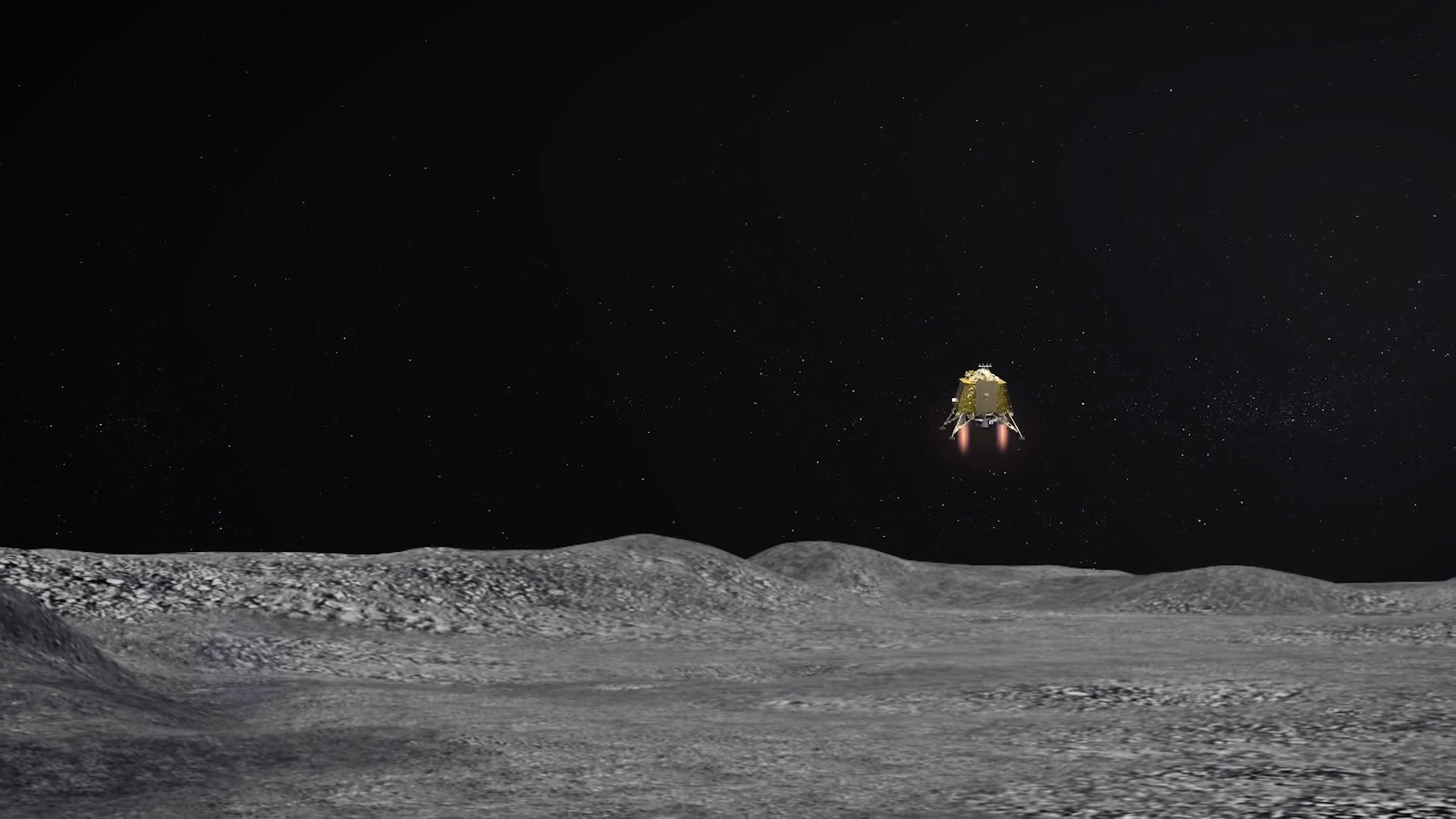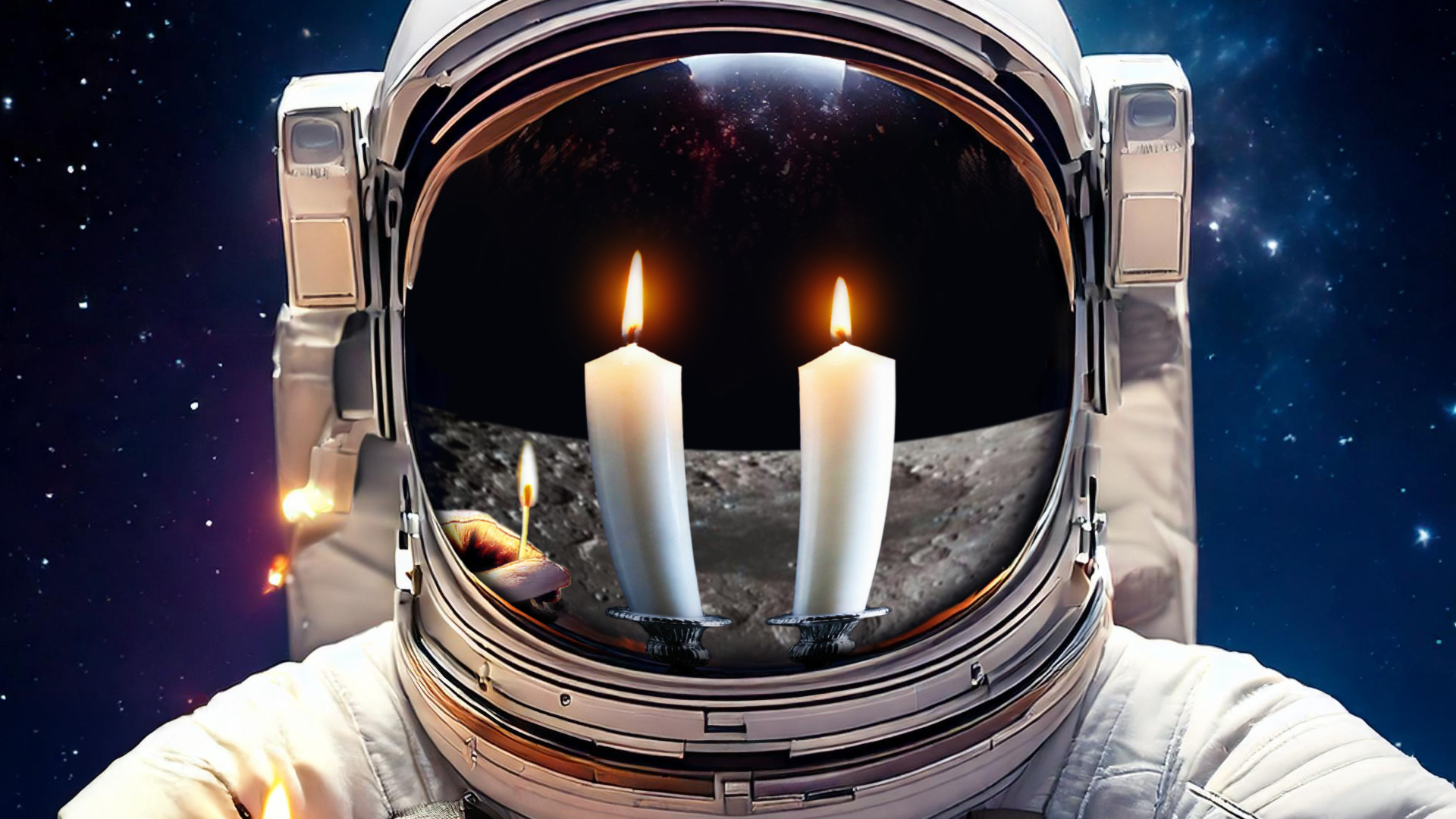See How India's Moon Lander Will Reach the Lunar Surface (Video)
Once it lands, it will deploy three science instruments and a rover.
As India's lunar lander prepares for an epic descent today (Sept. 6), the country's space agency released a video showing how it will attempt to make a soft touchdown.
Named Vikram, the lander launched to the moon with India's lunar orbiter, Chandrayaan-2, on July 22. The two spacecraft will work together to send back more information about the moon, at a time when NASA and several other space agencies around the world are considering more human exploration on the lunar surface.
The Indian Space Research Organization (ISRO) expects that Vikram will touch down between 1:30 a.m. and 2:30 a.m. Saturday (Sept. 7) India Standard Time. That will be between 4:30 p.m. and 5:30 p.m. EDT (2130-2230 GMT) on Friday (Sept. 6). You can watch live coverage of the landing here at Space.com.
Video: India's Vikram Moon Lander Explained
Related: India's Chandrayaan-2 Mission to the Moon in Photos
While the first part of the video goes step by step through Vikram's instruments, the action starts shortly after the 2-minute mark, when it shows how Vikram will make its descent. At an altitude of 62 miles (100 kilometers), Vikram will begin "rough braking" with four engines ignited. As the lander slows, it will scan the surface with an instrument called the Lander Position Detection Camera (LPDC) to make a safe approach.
Next comes the hovering stage, where Vikram will have two of its engines firing. At this point it will be roughly 1,300 feet (400 meters) above the surface and will begin its parabolic descent. The final stage of landing will be a gentle descent with the central engine on.
Vikram's work will have just begun once it arrives at the surface. If the landing is successful, it will deploy a small rover named Pragyan onto the lunar surface about four hours after touchdown. While the rover's deployment isn't shown in the animation above, the video shows the lander deploying its three scientific instruments.
Breaking space news, the latest updates on rocket launches, skywatching events and more!
The first instrument to be deployed will be the Surface Thermo-physical Experiment (CHASTE), which will look at temperatures and conductivity within the lunar surface. Charged electrons on the moon will be examined using the Radio Anatomy of Moon Bound Hypersensitive Ionosphere and Atmosphere (RAMBHA) payload. Meanwhile, a seismometer called ILSA (Instrument for Lunar Seismic Activity) will be placed on the ground.
ISRO says both the orbiter and lander appear to be healthy as they prepare for the landing, which will be the country's first soft touchdown on the moon. In 2008, the Chandrayaan-1 orbiter successfully deployed the Moon Impact Probe, which crashed onto the surface as planned. The debris it generated helped show the presence of water on the moon for the first time.
NASA is planning to land humans on the moon again in 2024, with the help of commercial companies and interested international partners, using water and other resources to help cut down on the cost of sending people there. The last humans to walk on the moon left in December 1972.
Visit Space.com today for complete coverage of India's Chandrayaan-2 Vikram landing on the moon.
- India Looks to Build on Lunar Legacy with Historic Moon Landing
- Here's Where India's Chandrayaan-2 Will Land Near the Moon's South Pole (and Why)
- India in Space: Read Our Complete Coverage
Follow Elizabeth Howell on Twitter @howellspace. Follow us on Twitter @Spacedotcom and on Facebook.

Elizabeth Howell (she/her), Ph.D., was a staff writer in the spaceflight channel between 2022 and 2024 specializing in Canadian space news. She was contributing writer for Space.com for 10 years from 2012 to 2024. Elizabeth's reporting includes multiple exclusives with the White House, leading world coverage about a lost-and-found space tomato on the International Space Station, witnessing five human spaceflight launches on two continents, flying parabolic, working inside a spacesuit, and participating in a simulated Mars mission. Her latest book, "Why Am I Taller?" (ECW Press, 2022) is co-written with astronaut Dave Williams.

